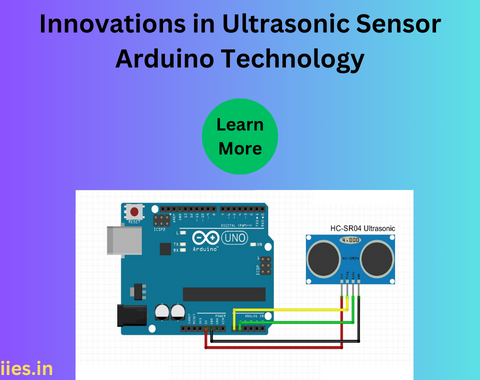
In the realm of electronics and DIY projects, Arduino has emerged as a versatile and popular platform for enthusiasts and professionals alike.
One of the key components that has become integral to many Arduino projects is the ultrasonic sensor.
This device, based on sound wave technology, opens up a world of possibilities for applications ranging from distance measurement to robotics.
In this article, we’ll delve into the intricacies of ultrasonic sensors, understand how they work, and explore various projects that can be accomplished using these sensors in conjunction with Arduino.
Ultrasonic sensors operate on the principle of echolocation, similar to how bats navigate through the dark. These sensors emit ultrasonic waves (sound waves with a frequency higher than the audible range of the human ear) and measure the time it takes for these waves to bounce back after hitting an object. By calculating the time delay, the distance between the sensor and the object can be accurately determined.
1. Transducer:
At the core of an ultrasonic sensor is a transducer that converts electrical energy into ultrasonic waves and vice versa. The transducer emits the ultrasonic pulses and receives the echoes.
2. Control Circuit:
The control circuit manages the timing and duration of the ultrasonic pulses. It ensures that the emitted waves are precisely timed and controls the reception of echoes.
3. Signal Processing Unit:
The signal processing unit interprets the received echoes and calculates the distance to the object based on the time delay. This information is then sent to the microcontroller for further processing.
4. Microcontroller Interface:
Ultrasonic sensors are often designed to be compatible with microcontrollers like Arduino. The sensor communicates with the microcontroller, providing distance data that can be used for decision-making in various applications.
Upon hitting the obstacle, the waves bounce back to the sensor. The sensor measures the time taken for the waves to return and uses this information to calculate the distance using the formula: Distance = (Speed of Sound × Time)
Integrating ultrasonic sensors with Arduino opens up a myriad of possibilities for creative projects. Arduino provides a user-friendly interface for programming and interacting with the sensor, making it accessible even for beginners. Below are some popular projects that showcase the versatility of ultrasonic sensors when combined with Arduino:
1. Distance Measurement:
A fundamental application of ultrasonic sensors is measuring distance. Arduino can be programmed to read the sensor data and display the distance on an LCD screen or serial monitor. This can be useful in projects such as automated parking systems or object detection.
2. Obstacle Avoidance Robot:
Arduino-powered robots equipped with ultrasonic sensors can navigate their environment by detecting obstacles and adjusting their path accordingly. This is a popular project for robotics enthusiasts and serves as a foundation for more complex autonomous systems.
3. Smart Trash Can:
Ultrasonic sensors can be employed in smart trash cans to detect the presence of an object or hand and automatically open the lid. Arduino can control the opening and closing mechanism based on the sensor input, adding a touch of automation to everyday tasks.
4. Gesture-Controlled Devices:
By combining ultrasonic sensors with Arduino and additional components like accelerometers or gyroscopes, gesture-controlled devices can be created. This opens up possibilities for creating interactive installations or user interfaces without physical contact.
5. Liquid Level Monitoring:
Ultrasonic sensors can be utilized to monitor the level of liquids in tanks or containers. Arduino can process the sensor data and trigger alerts when the liquid level reaches a certain threshold, making it suitable for applications in agriculture or industrial settings.
1. Calibration:
Calibrate the ultrasonic sensor to account for factors such as temperature and humidity, as these can affect the speed of sound in the air and impact distance measurements.
2. Power Supply:
Ensure a stable power supply for both the ultrasonic sensor and Arduino to prevent erratic behavior or inaccurate readings. Using a dedicated power source for the sensor is recommended.
3. Mounting and Placement:
Properly mount and position the ultrasonic sensor to minimize interference and achieve accurate readings. Avoid reflective surfaces that may cause echoes, leading to inaccurate distance measurements.
4. Code Optimization:
Write efficient and optimized code for Arduino to handle sensor data accurately and respond quickly. Implement error-checking mechanisms to enhance the reliability of your projects.
Ultrasonic sensors and Arduino together form a powerful combination that can be harnessed for a wide range of applications, from basic distance measurement to complex robotics. Understanding the principles behind ultrasonic sensors and learning how to integrate them with Arduino opens the door to limitless possibilities for innovation and creativity. Whether you are a hobbyist exploring the world of electronics or a professional working on advanced projects, the marriage of ultrasonic sensors and Arduino provides a solid foundation for bringing your ideas to life.
Indian Institute of Embedded Systems – IIES